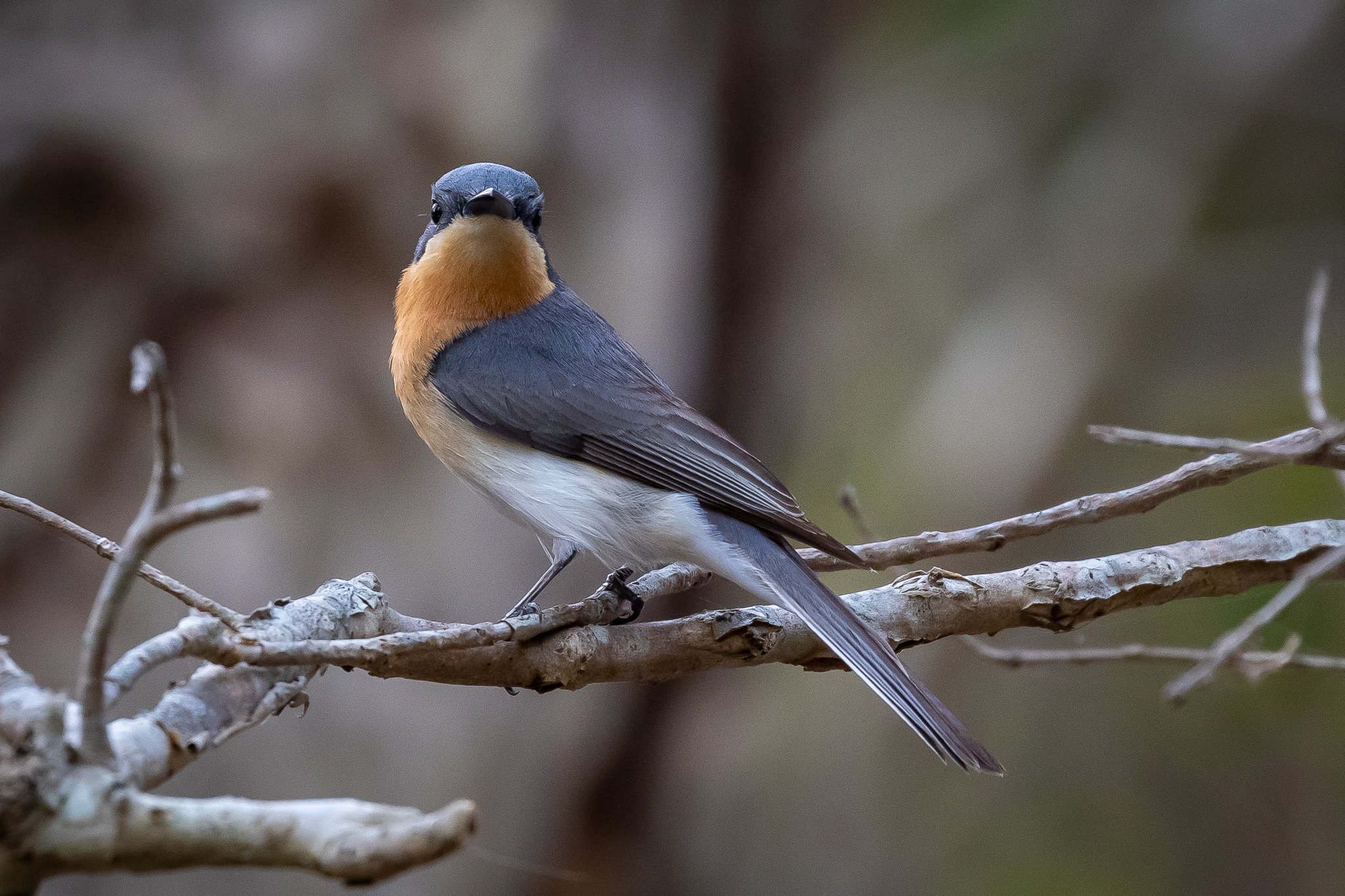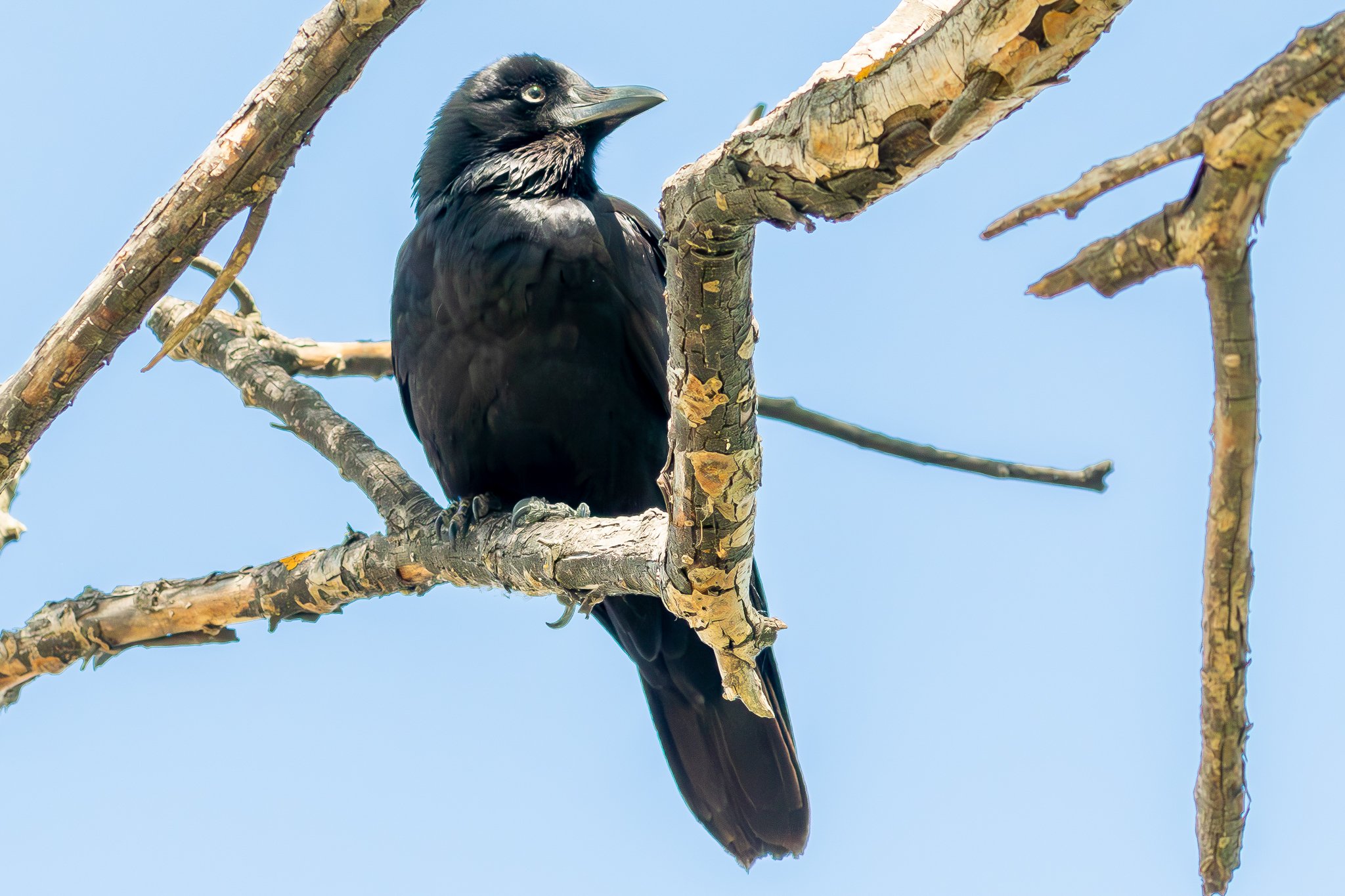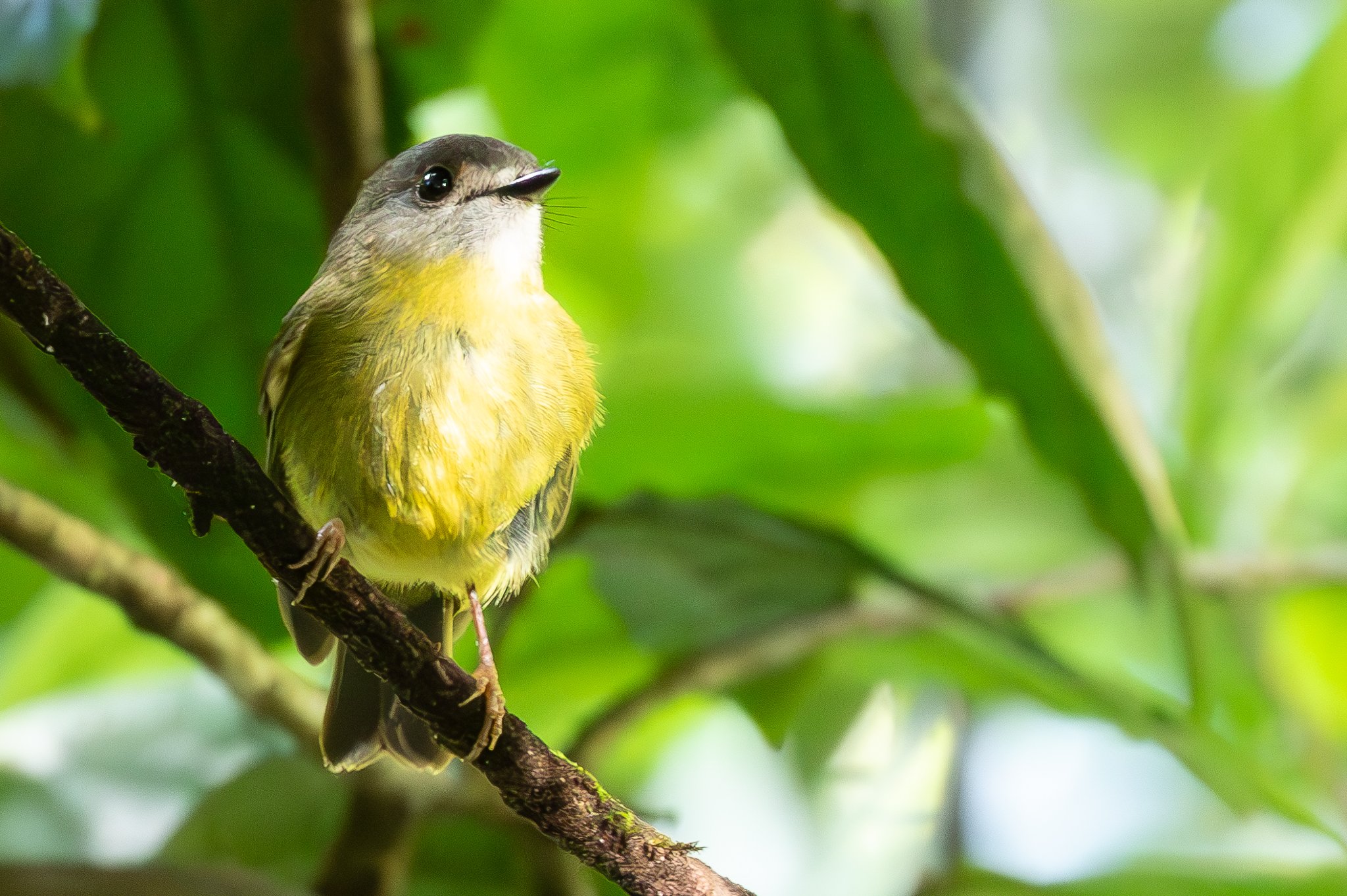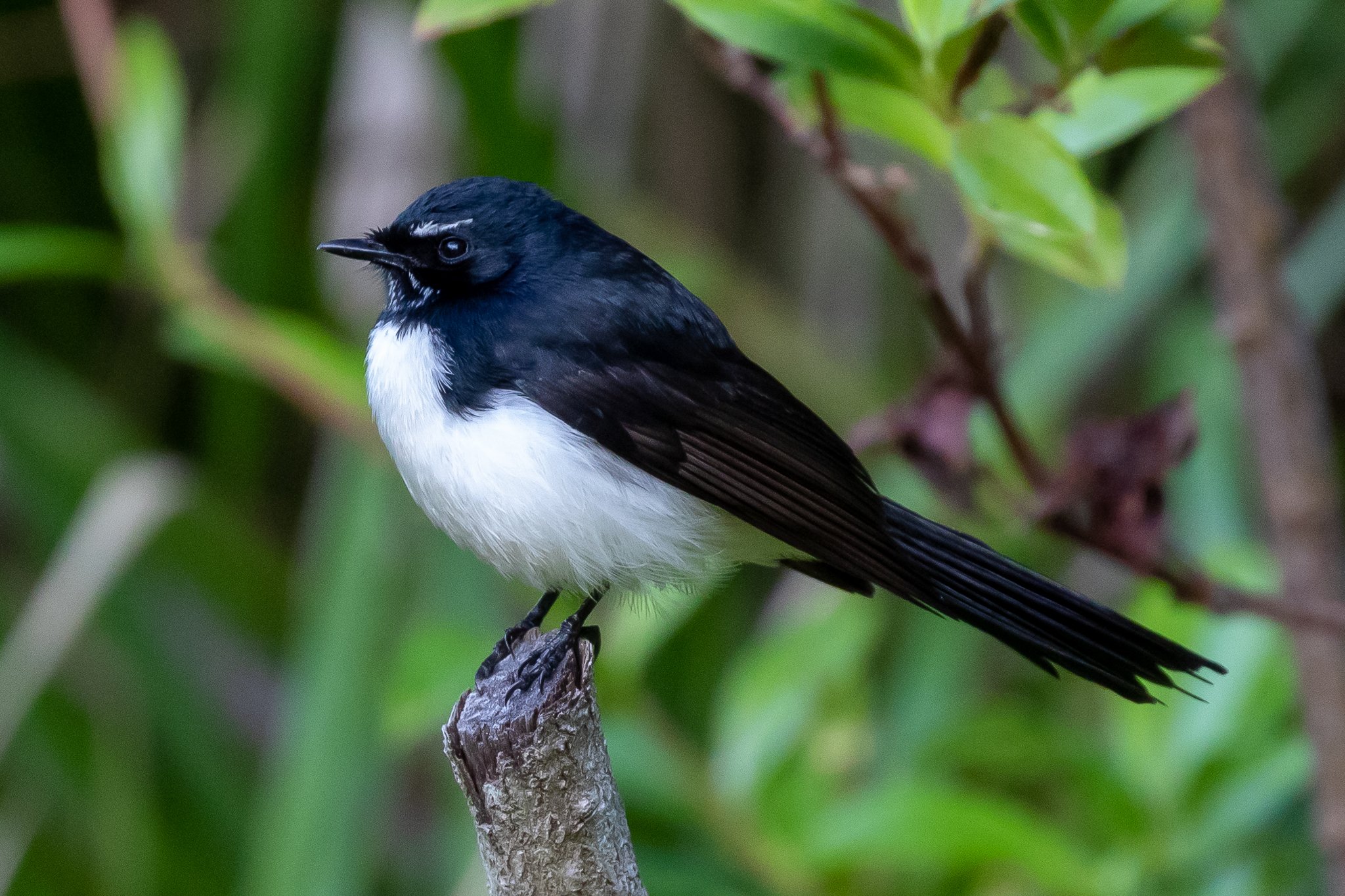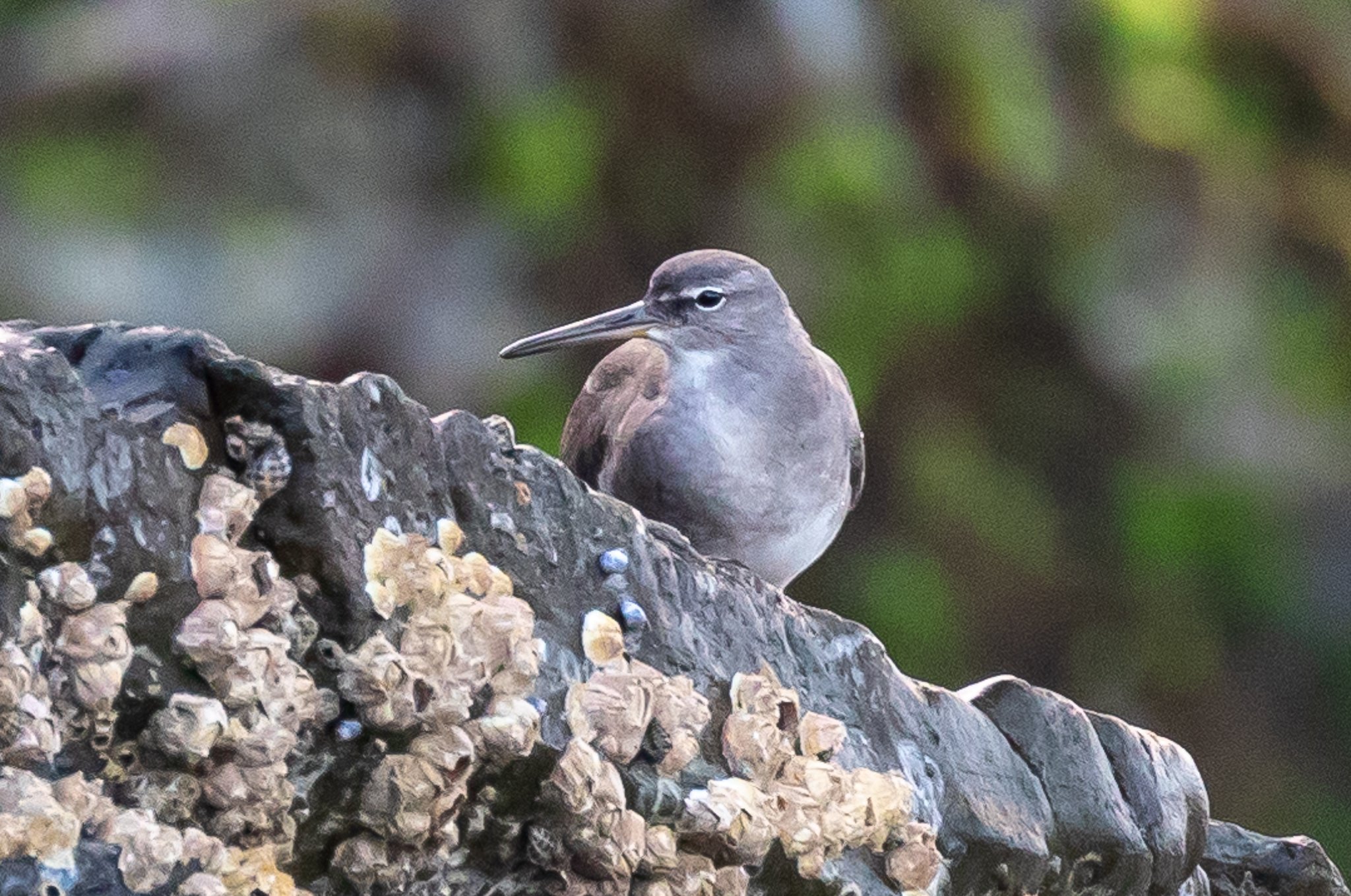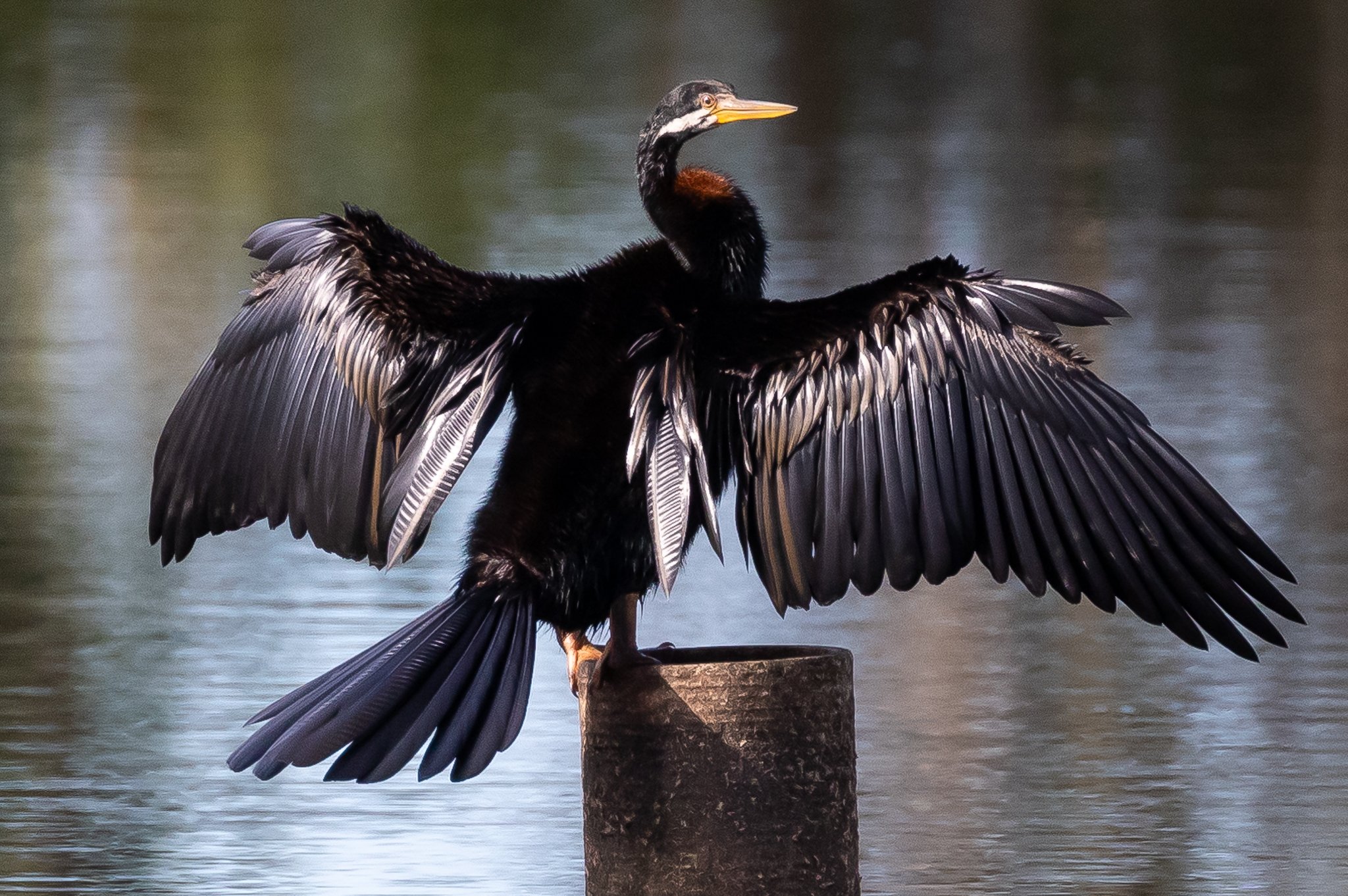I could see the silhouette of a small bird in the distance on the rocks at Broken Head, Northern Rivers region NSW. It looked like a Tattler, an unusual bird to me. So which one? The more common Grey-tailed Tattler or the uncommon Wandering Tattler? Back home looking at photos it was hard to tell. I was leaning towards the rarer Wandering Tattler.
The main evidence was the brow line which went as far as the eye, unlike the longer brow line of the Grey-tailed Tattler. I read that the nasal groove of the Wandering Tattler extended two thirds of the bill length, and longer than the Grey-tailed, but the photos did not show this clearly. Also that the Wandering Tattler was a more consistently plain grey but not being able to make any comparison this did not help.
So off to summon expert help from the Australian Bird Identification page on Facebook. And agreement it was a Wandering Tattler. Also some further support: Birdata Explore showed a Wandering Tattler at nearby Ballina less than a week ago.








